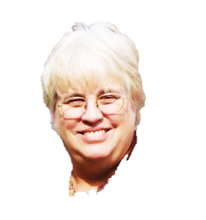Our guide was a university teacher who teaches Russian to English-speaking exchange students. He works during the tourist season to earn extra money to pay for his new apartment and coming marriage. Until recently he lived in a co-op apartment where two or more families shared one apartment with each family living in one bedroom and using the same kitchen, living room, and bathroom. Now he lives with his parents while the new single-family apartment he has bought is finished. Investing in an apartment is safer than putting money in a bank where inflation might eat it up. Housing in Russia is still very expensive with substandard construction compared to Hungry and Finland where we also visited.
Several of you have asked about Russia being curious what it is like. We visited a Russian middle school, and I would like to describe that visit as an example of all of Russia. This school was formed in the 80s when new kinds of schools became possible as the old state system began to change. Some university teachers formed the school putting an emphasis on a Latin and Greek classical education much like education was done in the 1800’s in Russia. They wanted their children to think for themselves and be creative. The university teachers themselves became the first part time teachers and introduced the students to research, encouraging the students to think outside of the usual box. Their first graduates are now leaders in St. Petersburg and living up to the expectations of their teachers.
This school is the number one school in St. Petersburg and everyone of course wants to get in. They only take a small number of the students who apply for the 50 positions that open every year. Of the 50 who are accepted only 35 graduate, since it is a tough school. Middle school starts at about 12, and they graduate at 16 like the other students in Russia. Girls make up about half of the classes. The students have a lot of homework, and there are no school sports teams. They perform Greek plays and are encouraged in other scholarly occupations like writing and research. The classes are small with perhaps 15 students. They take two language tracts, German or English, and spend their school time becoming expert speakers of those languages for the first few years. Later they can switch and study other languages. They have a computer lab and use other modern methods.
This special school is still a government school, although some of their finances come from outside fundraising. An elite American university had given money to support their classical library. Money for education in Russia is a problem. There is an elite group of students who pay their own way in Russian schools, but you must also have brains to make it in this special school. There are also some private schools, but they have a reputation for the security they offer rich parents not for their academics.
The surprising thing is that this elite school is housed in an old rented school building that must be over a hundred years old. It would be condemned as unsafe in Kentucky. Most Russian buildings look like rented buildings that no one cares about. This is a left over from a system that prevented private ownership, and even today the government only wants to lease land on 99-year leases.
In summary Russia is full of bright people searching for a better life using worn out tools and infrastructure. They are proud of their rich culture and heritage, but a little prejudiced against Balkan states and other races. The papers told us that foreign students from Africa and Asia had recently been seriously beaten up on the streets of St. Petersburg. There are those who drive luxury cars and live rich much like under the old kings. They are former communists who had the influence and money to buy into capitalism when industries were auctioned off at low prices. However, I feel that the future of Russia is with those who think outside the box and care enough to pay a high price for their freedom to do so.
Betty Cutts



























